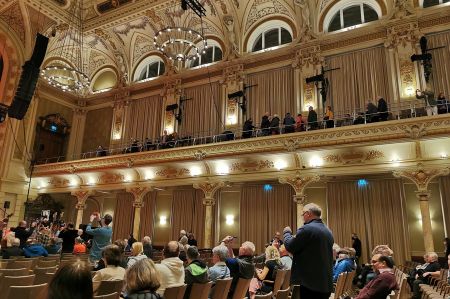The Great Hall of the Historical City Hall of Wuppertal
- Written by Portal Editor
We just had the opportunity in Wuppertal to "check" the statement of a connoisseur of classical music, Sir Simon Rattle, for his so important sentence: "Wuppertal has one of the best acoustic concert halls in the world."
Even if we enjoyed it, the concert was more of a mixture of classic and rock, with a focus on rock from the early Genesis period: Steve Hackett live with band, choir "Amici del Canto" and the Wuppertal Symphony Orchestra, although it is always difficult to find the right set-up for to find the acoustics. But it had worked. A wonderful evening of music for the 50th birthday of "Selling England by the pound" in the wonderful Great Hall of the Historical City Hall.
A concert and meeting house on the Johannisberg
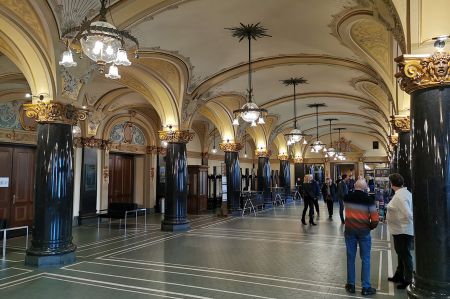 Even the first look into the anteroom amazed us, no question. The Great Hall was understandably still closed. Time enough to deal with the history a little. Until 1894, the site on which the so-called historic town hall is located today was privately owned by the Küpper family. In 1831 Abraham Küpper took over the old tavern on the Johannisberg, in whose "banqueting hall" there was room for around 1,000 people. The concert evenings that take place there can therefore be regarded as a cornerstone of the musical tradition on the Johannisberg in Wuppertal.
Even the first look into the anteroom amazed us, no question. The Great Hall was understandably still closed. Time enough to deal with the history a little. Until 1894, the site on which the so-called historic town hall is located today was privately owned by the Küpper family. In 1831 Abraham Küpper took over the old tavern on the Johannisberg, in whose "banqueting hall" there was room for around 1,000 people. The concert evenings that take place there can therefore be regarded as a cornerstone of the musical tradition on the Johannisberg in Wuppertal.
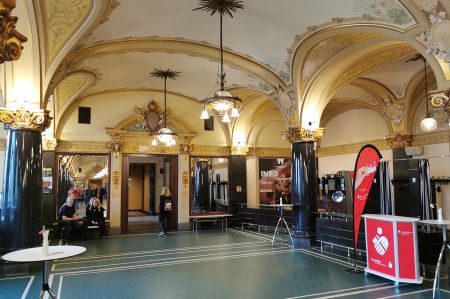 The decision then made to build a concert and assembly hall appropriate to its time at this location resulted in the announcement of an architectural competition in 1895. The bourgeoisie of his time were proud of their historical cultural assets and were enthusiastic about the German Renaissance. Furniture, wallpaper, facilities and buildings were "trimmed for Renaissance". This so-called Neo-Renaissance became the German national style, later known as the "Gründerzeit" style. But it was also the time of growing industrialization, in which more and more new companies were founded. Representative forms with a lot of decoration were popular and were traditionally considered valuable at the time. Having said that, the Stadthalle Wuppertal was built between 1896 and 1900.
The decision then made to build a concert and assembly hall appropriate to its time at this location resulted in the announcement of an architectural competition in 1895. The bourgeoisie of his time were proud of their historical cultural assets and were enthusiastic about the German Renaissance. Furniture, wallpaper, facilities and buildings were "trimmed for Renaissance". This so-called Neo-Renaissance became the German national style, later known as the "Gründerzeit" style. But it was also the time of growing industrialization, in which more and more new companies were founded. Representative forms with a lot of decoration were popular and were traditionally considered valuable at the time. Having said that, the Stadthalle Wuppertal was built between 1896 and 1900.
The heart – the Great Hall
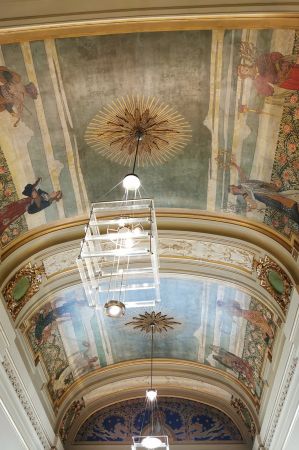 It is the heart of the historic town hall: the Great Hall. Its impressive height extends over the two main floors of the house. Its airiness and the interplay of opulent decorations on ceilings, walls and galleries create an incomparable spatial experience. In addition to its atmospheric changeability, the Great Hall impresses with its technical multifunctionality and brilliant acoustics, which are considered among the best in the world in musical circles. This ambience creates the glamorous framework for large concert events, shows, high-quality presentations and conferences as well as for fairy-tale galas, balls and festivals.
It is the heart of the historic town hall: the Great Hall. Its impressive height extends over the two main floors of the house. Its airiness and the interplay of opulent decorations on ceilings, walls and galleries create an incomparable spatial experience. In addition to its atmospheric changeability, the Great Hall impresses with its technical multifunctionality and brilliant acoustics, which are considered among the best in the world in musical circles. This ambience creates the glamorous framework for large concert events, shows, high-quality presentations and conferences as well as for fairy-tale galas, balls and festivals.
Sir Simon Rattle: "Acoustically, Wuppertal has one of the best concert halls in the world."
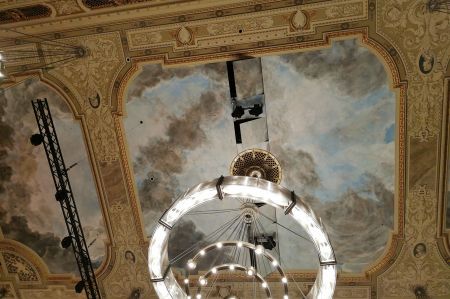 What has long been known in the international music world has even been scientifically confirmed by a Finnish research team: the Great Hall of the Historical City Hall in Wuppertal is one of the acoustically best concert halls in Europe.
What has long been known in the international music world has even been scientifically confirmed by a Finnish research team: the Great Hall of the Historical City Hall in Wuppertal is one of the acoustically best concert halls in Europe.
The Vienna Philharmonic felt “at home here”, the great pianist Hélène Grimaud called it an “almost magical place for music” and Sir Simon Rattle advised the people of Munich to “look to Wuppertal”. Shortly after the SZ interview with Rattle in November 2012, Professor Tapio Lokki from Aalto University Finland and his team registered in Wuppertal to scientifically measure the Great Hall.
Professor Tapio Lokki from Aalto University Finland
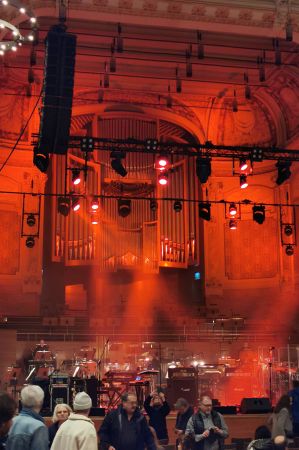 The award-winning researcher has developed a novel method that enables precise comparison of concert hall acoustics. In addition to purely physical measurements, sensory evaluations of the spatial sound are also included.
The award-winning researcher has developed a novel method that enables precise comparison of concert hall acoustics. In addition to purely physical measurements, sensory evaluations of the spatial sound are also included.
Lokki's conclusion: "Stadthalle Wuppertal is not very well known among acousticians worldwide. However, the hall has very nice acoustics and it should be much better known.
We really liked the Stadthalle and it definitely supports to full dynamics that an orchestra can play. It is one of the best concert halls in Europe.”
The Finnish acousticians have developed a symphony orchestra simulator, the so-called "loudspeaker ¬orchestra", and used it to capture the spatial sound of 19 European concert halls.
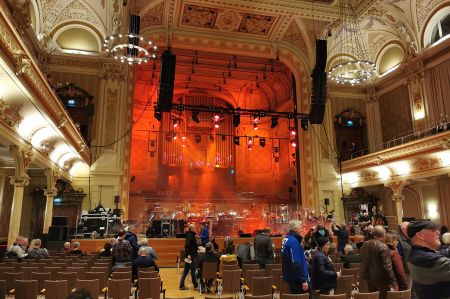 The structure was exactly the same everywhere, so that the hall was the only variable factor that influenced the sound of the recordings. This later enabled a very precise comparison of the acoustic properties in the laboratory.
The structure was exactly the same everywhere, so that the hall was the only variable factor that influenced the sound of the recordings. This later enabled a very precise comparison of the acoustic properties in the laboratory.
While listening to the music from the individual halls with the spatial sound reproduction in the laboratory, all subjective listening tests were also carried out using sensory test methods, which reveal the different perceptual factors between the concert halls.
With this combination of objective and subjective sensory data, Professor Lokki's team was able to explain the preference given to certain concert halls.
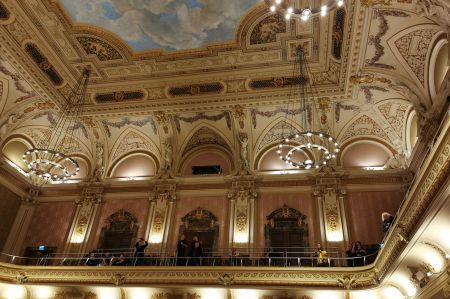 The traditional "shoebox" architecture is clearly ahead: the acoustically best concert halls in Europe - Concertgebouw Amsterdam, Wiener Musikverein, Historische Stadthalle Wuppertal, Konzerthaus Berlin - are all built in a similar way.
The traditional "shoebox" architecture is clearly ahead: the acoustically best concert halls in Europe - Concertgebouw Amsterdam, Wiener Musikverein, Historische Stadthalle Wuppertal, Konzerthaus Berlin - are all built in a similar way.
Please read as well:
